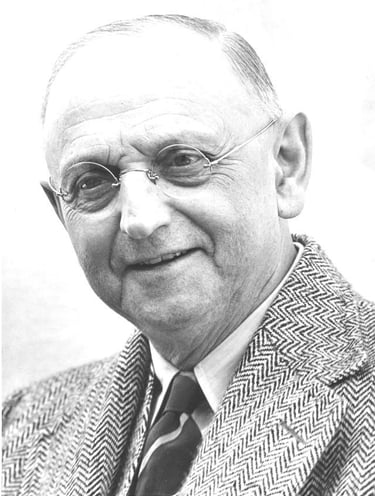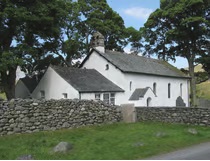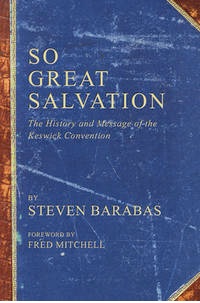
I am crucified with Christ, nevertheless, I live, yet not I...
Galatians 2:20
Living the Yet Not I Life...
Pronounced Kes-ick
Keswick
In the mid 1800’s bible teachers through-out America and Europe were studying ways to enter into, and to help others enter into, what had been called the second blessing, deeper life, the baptism of the Holy Spirit and other names.
An American couple, born Quakers, members of a Presbyterian church, Mr. And Mrs. Robert Pearsall Smith were both “by happy coincidence”, converted on the same day in 1858.


They had come into the experience of salvation, but it was not long before Mrs. Smith began to despair of ever gaining freedom over continuing sin. There was a stirring of truth regarding a second blessing: Phoebe Palmer’s writings on entire sanctification and W E Boardman’s The Higher Christian Life encouraged the Smiths to pursue the promised deeper relationship with Christ. Through a time of struggle and with the help of some who knew the secret, she learned the truth of sanctification by faith.
She was gifted as a teacher, being able to explain the seemingly complicated in a simple manner. Her book A Christian’s Secret to a Happy Life brought them wide spread recognition in American Christian Circles.
Her husband had the mercantile gift and before long they were spreading her new insights to surrounding communities. Due to overexertion in the enterprise, it was suggested they go to England to allow Mr. Pearsall Smith to recuperate. Their fame proceeded them and upon arrival they were asked to host a series of meetings with leading Christians which eventually lead to the first annual convention at Keswick (the ‘w’ is silent) in 1875.
The Pearsall Smith’s were appointed to lead the first conference, but due to some failing on Mr. Smith’s part, they returned to American. Others took over the lead of the first conference.
An Anglican, H. W. Webb-Peploe agreed to head up the conference and remained the leader for the next fifty years. Many well known names became associated with the Keswick tradition whose writings are still commonly available and read today: A.T. Pierson, F.B. Meyer, Andrew Murray, H.C.G. Moue, W.H. Griffith Thomas, C.I. Scofield, J. Hudson Taylor, Charles G. Trumbull, J. Oswald Sanders, W. Graham Scroggie, Robert C. McQuilkin, J.Robertson McQuilkin, Alan Redpath, Ruth Paxson, and W. Ian Thomas.
From it’s beginning, Keswick was not concerned with theological issues but was focused on the practical application of Bible truths. It was called “a convention for the promotion of practical/scriptural holiness.”
The Keswick method
It has been said that the message of Keswick cannot be separated from it’s method. It seeks to lead attendees to, first of all, the conviction and renunciation of all sin, then to a surrender to Christ for the infilling of the Holy Spirit. It takes place over 5 days and each day was and still is devoted to a specific outcome.
1. The first day is devoted to the cause of all spiritual ill-health, sin, whether known or unknown. An effort is made to bring the Christian to a conviction that his/her lack of power is due to unacknowledged sin and to a desire for abandonment of sin. (AA’s 4th step)
2. On the second day, the speakers address God’s provision for sin; and it is taught that God through Christ, has dealt with the whole problem of sin so that it need never again be a struggle for the Christian. Here is introduced Keswick’s pivotal scripture Romans 6:6 in which the listener is brought into an understanding that the old man has been dealt with on the cross 2,000 years ago. The Christian, the new man, is now free and seated in Heavenly Places.
3. The consecration of the Christian is the subject of the third
Day.
4. The fullness of the Spirit is the topic of the fourth day, and
5. Response and call to service is the emphasis of the 5th day.
In Steve Barabas’s book on Keswick there is this passage:
The place in the new Testament where the truth of the believer’s
identification with Christ in His death and resurrection is most clearly set forth is the sixth chapter of Romans. It would not be possible, I think, to exaggerate the importance of this chapter for the doctrine of sanctifi-cation. It has been called the Magna Charta of the soul and the Emancipation Proclamation of the Christian. Failure on the part of the child of God to realize that it is intensely practical and entirely applicable to our present circum-stances, and that it is God’s answer to the whole problem of sinful human nature, means failure at the very first step of the Christian life and walk. It is astonishing that theologians have passed by the chapter almost as though it did not exist. One has only to examine the sections on “Sanctification “ in the systematic theologies of such standard theologians as Charles Hodge, William Shedd, Henry B. Smith, J.J. Oosterzee, and Louis Berkhof to see that they make scarcely any reference to it. This is really astonishing! Only since Keswick first called attention to the vital significance of this chapter to the whole question of sin and sanctification have theologians even begun to give it its proper place.
There is much more to say about Keswick. For the interested reader, there is no better source that Steve Barabas's book.




